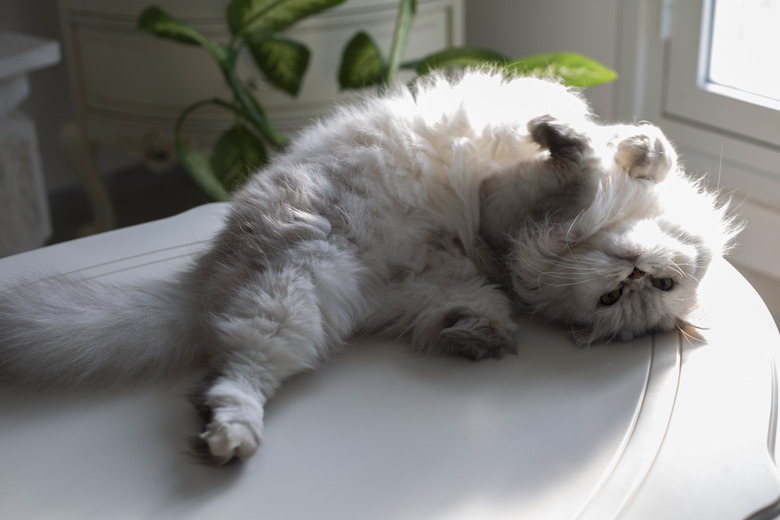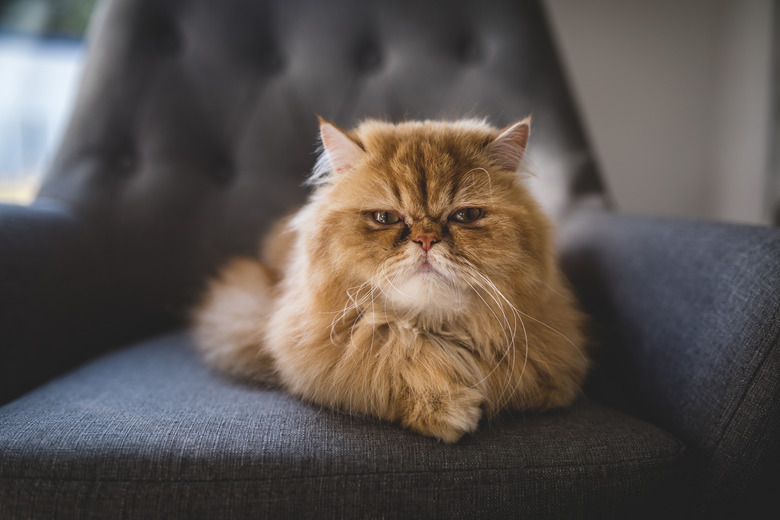How To Identify A Persian Cat
One of the most easily recognized breeds in the feline world is the glamorous pure breed Persian cat, noted for her glorious long coat. The earliest evidence of a long-haired cat's existence appeared on ancient hieroglyphics. During the 1500s, Phoenician caravans moved toward Europe from Persia with long-haired cats in tow. By the 1800s, the Persian was named and exhibited in a cat show that took place at the Crystal Palace in London. Also during the 1800s, Persian cats had arrived in America, where they quickly soared in popularity.
The Cat Fanciers Association officially recognized the Persian in 1871. Today, the Persian is the most popular cat registered by the Cat Fanciers Association.
Snub nose Persian cat appearance
Snub nose Persian cat appearance
The Persian is a medium- to large-sized cat with heavily boned, short legs, a plumed tail, a ruff around the neck, a round head, and small ears. The facial features include rounded cheeks, a short, snub nose, and large, round, expressive eyes. The Persian is clad in a long, silky coat that comes in a vast array of color and pattern choices. A Persian who is cast into the spotlight of Cat Fanciers Association show competitions is classified into one of seven color groups.
The seven color groups include:
- Solid.
- Silver and golden.
- Shaded and smoke.
- Tabby.
- Parti-color.
- Bicolor.
- Himalayan.
One of the most popular color choices is the Himalayan, with her jewel-toned blue eyes and rich color points that adorn her mask, ears, tail, and legs. The silver Persian is a perpetual favorite. Prospective owners of Persian cats must expect to engage in a daily grooming ritual to prevent the long locks from tangling and forming painful mats.
Sweet and dignified temperament
Sweet and dignified temperament
The Persian's expression accurately conveys her temperament. While breed is not a reliable indicator of temperament, the Persian tends to be quiet and gentle. Her regal and dignified appearance is exemplified as she adorns a sunny windowsill or the back of a sofa for hours. Persians emit a delicate meow, but they are not as vocal as some other cats.
Their heavily boned and squat physiques influence their preference to remain grounded. They are not likely to soar and explore high places in the home. Persians are sweet, playful and affectionate. Although they are not demanding of attention, they are loving companions. Their intelligence and their charms delight their owners. Persians thrive best in calm households.
Health and longevity
Health and longevity
One of the primary health concerns to which the Persian is prone is brachycephalic airway syndrome. This condition results from the snub nose Persian cat face. Brachycephalic airway syndrome places the Persian at a higher risk for upper respiratory infection and heatstroke.
Another health concern that afflicts Persian cats is polycystic kidney disease, a genetic condition in which one or both kidneys become infiltrated with cyst formations, ultimately resulting in kidney failure. Other health problems that have been noted in Persians include:
- A degenerative eye disease called progressive retinal atrophy.
- Bladder infections and bladder stones.
- Liver shunts.
- A heart condition called hypertrophic cardiomyopathy.
- Dental malocclusion.
- Blocked tear ducts.
Reputable breeders screen their cats to prevent passing some of these conditions down their breeding lines. Barring any of these health problems, Persian cats who are kept indoors and receive regular veterinary checkups can live lengthy life spans of 15 to 20 years or more.

